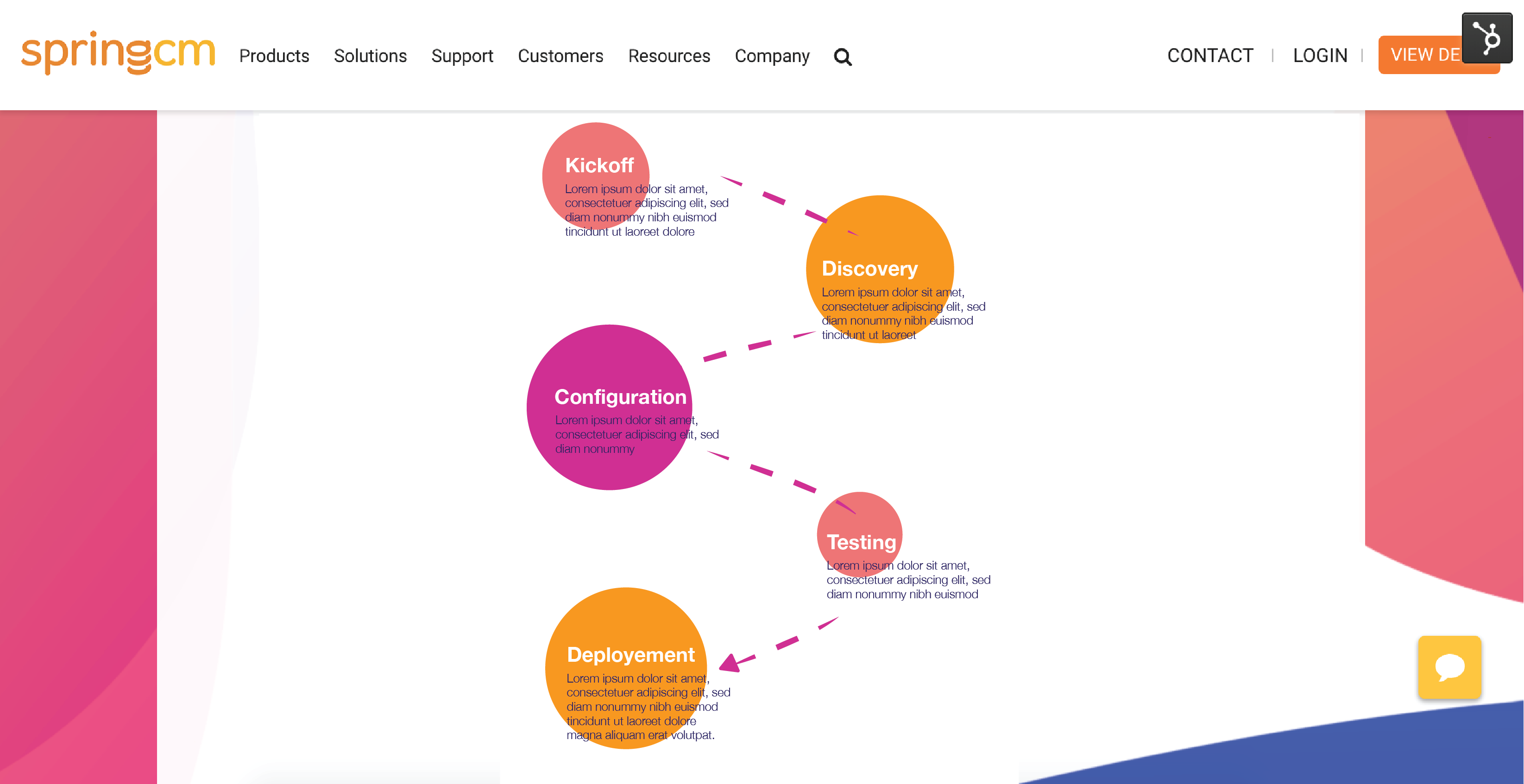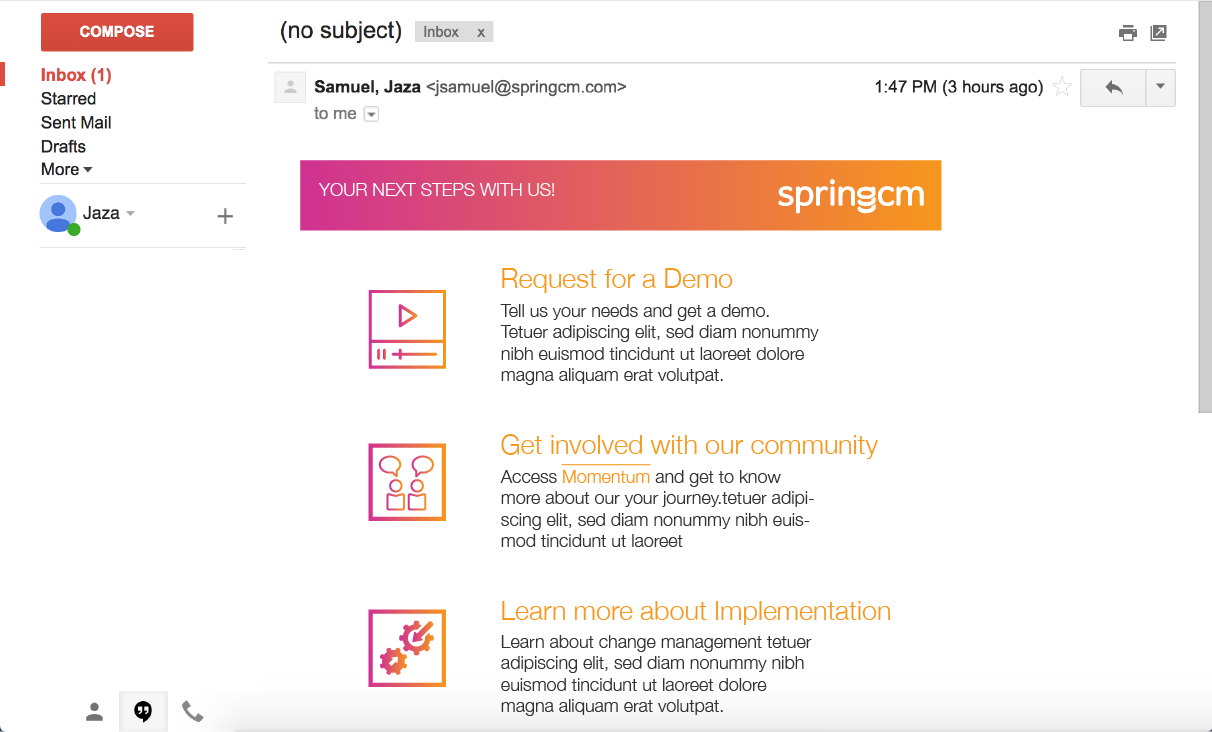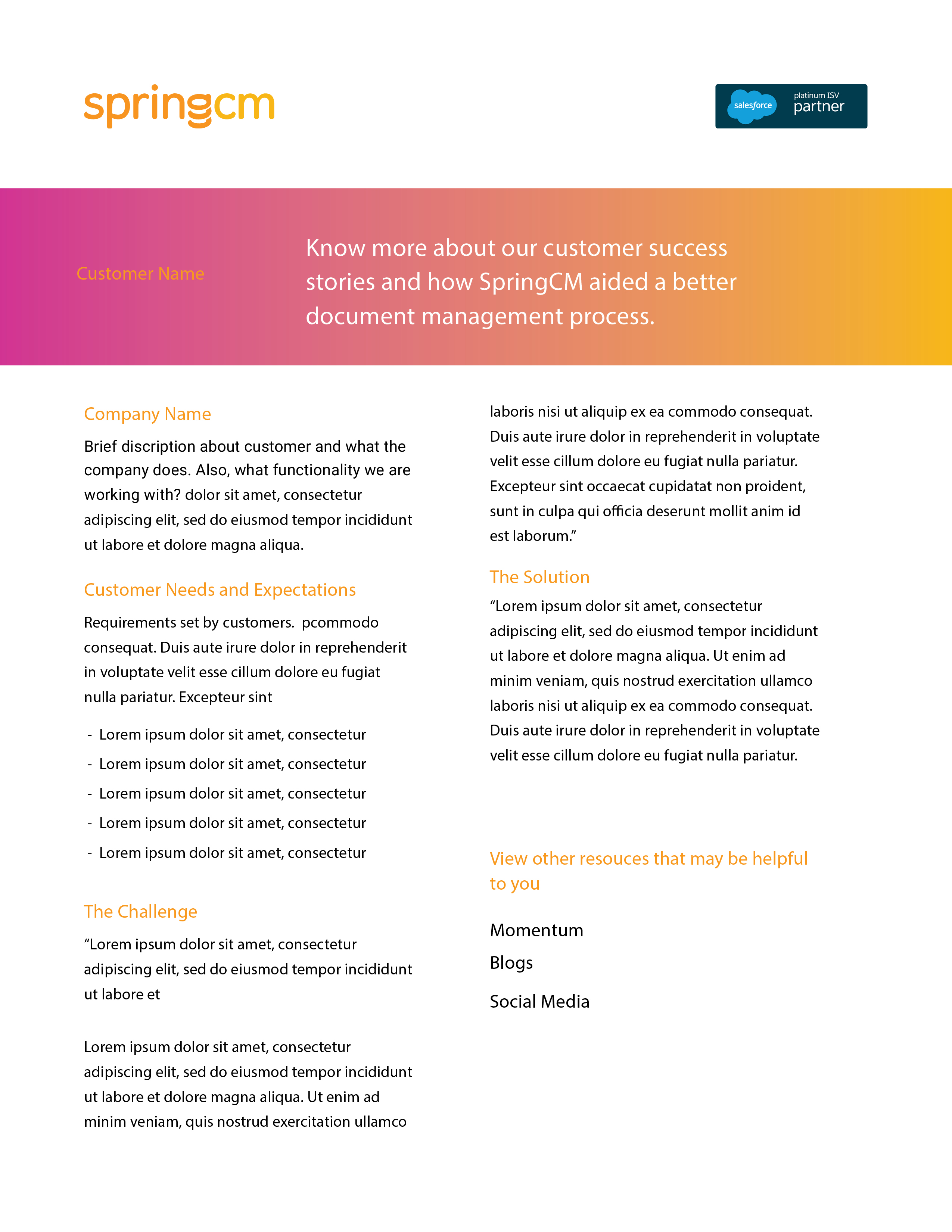SpringCM, A DocuSign
Company
This project showcases the journey prospects take from awareness of SpringCM to becoming a customer. This research resulted in gathering data that captures the experiences and emotions people have along the way.
The process is centered around conducting interviews and user tests with current customers, SpringCM employees, and non-customers. These findings translate into a prospect journey map that identifies gaps and opportunities for improvements.
Internship, 2018
ESTABLISHING THE ECOSYSTEM
The interview process was divided into three distinct groups; the internal SpringCM team, the current customers, and non-customers. The initial step is to understand how prospects are funneled internally between teams. These insights were then gathered and helped construct interview questions for current customers. Non-customers were interviewed to understand how SpringCM, as a brand, is perceived by individuals who are not familiar with the comapany’s products.
The ecosystem map indicates different parts of the system that are important for the customer experience. The different layers show different touchpoints a customer has; i.e. from the initial interaction with SpringCM to other influential aspects that are part of the journey.
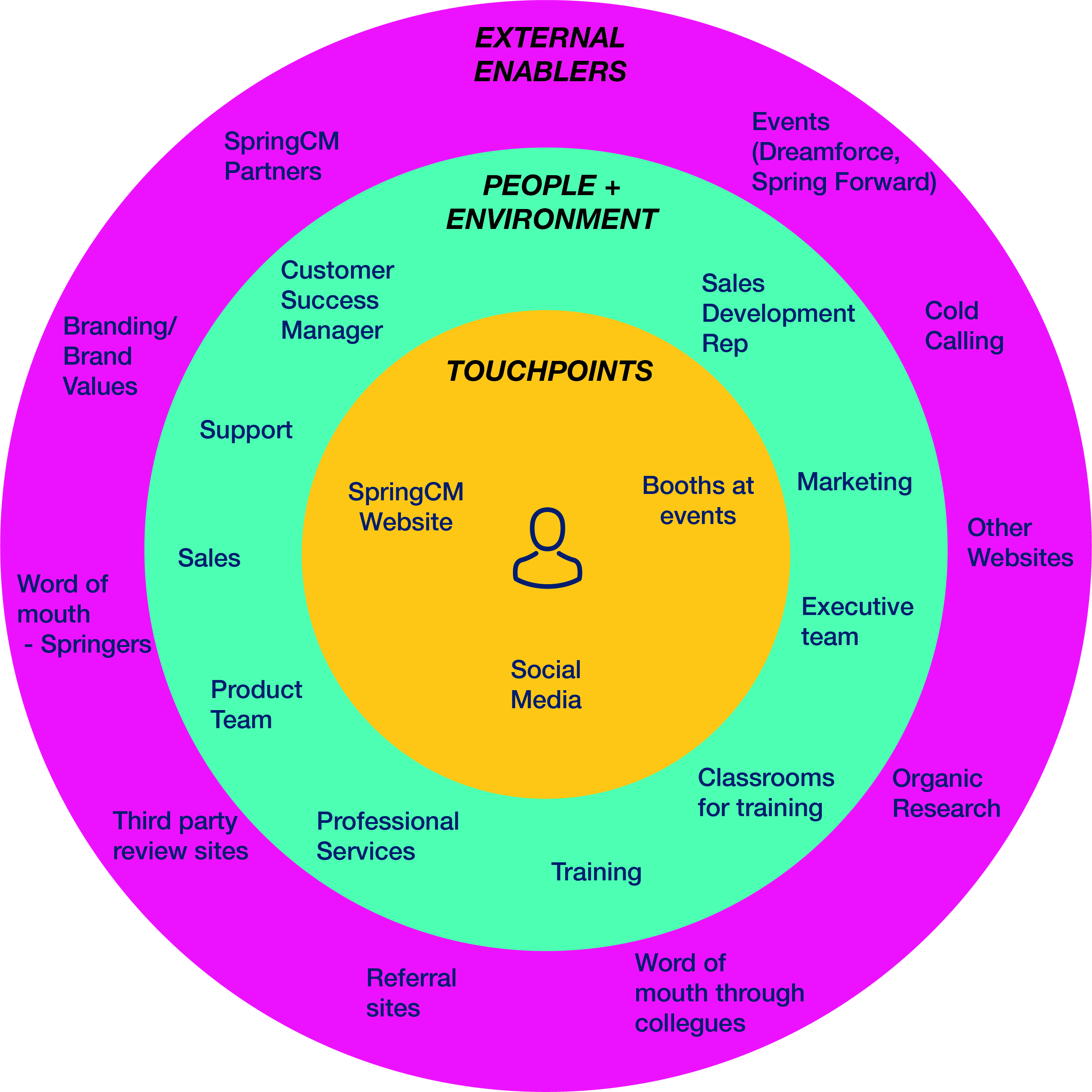
Mapping the internal systems journey
I intervied employees from every team on the buy side to find out the gaps in the internal system. A pattern emerged after I interviewed individuals from the Marketing, SDR (Sales Development Representative), Sales, Professional Services, CSM (Customer Success Managers), and Training team. The following themes emerged:
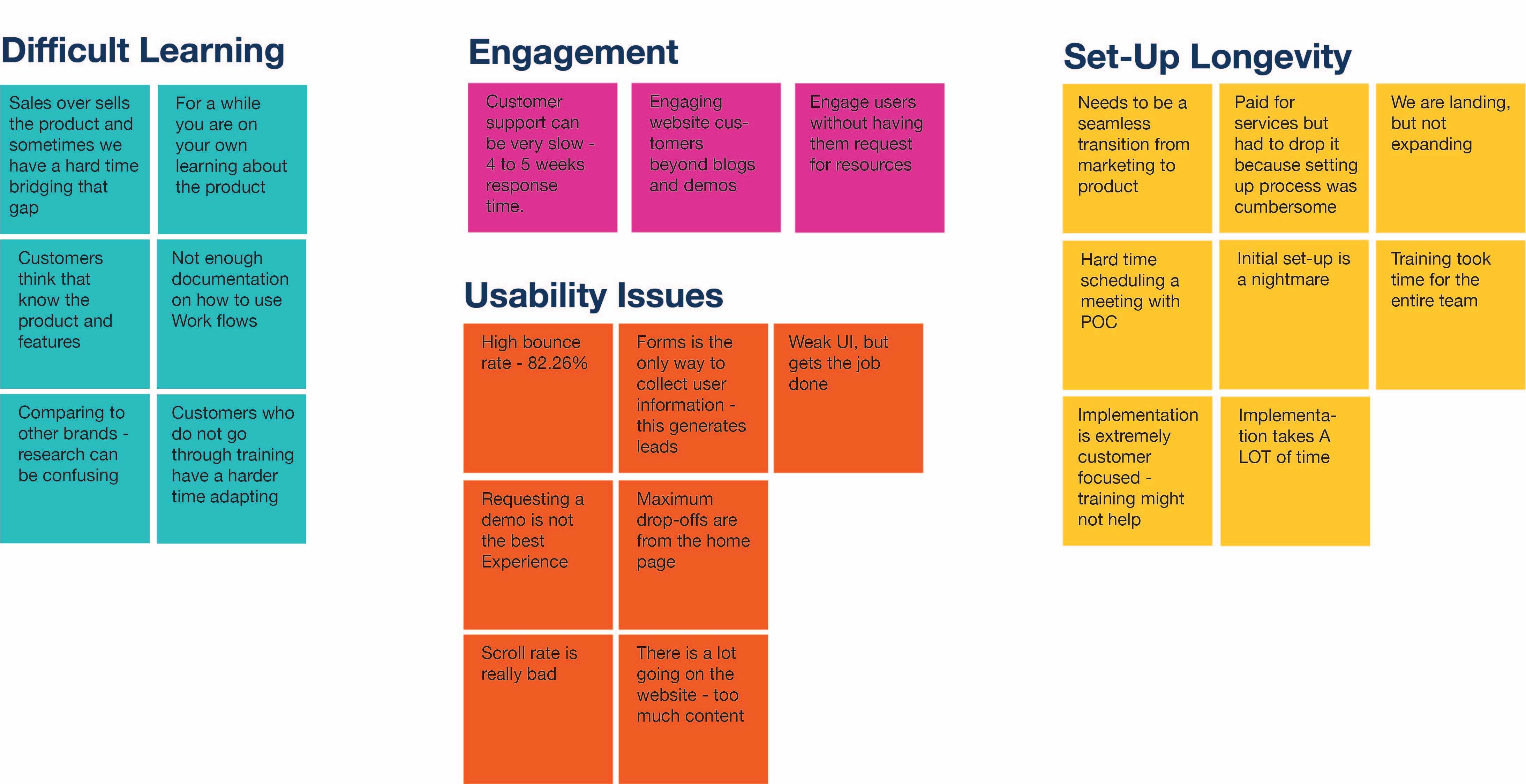
1. Setting Expectations: Sales team over-sells the product to prospect customers, making it difficult for the Implementation Team to deliver during the product acquisition phase.
2. Follow-up Timeline: As the company is rapidly expanding, the Sales team is overloaded and finds it difficult to follow-up with prospect customers in a timely manner.
3. High Bounce Rates: The marketing team was experiencing a high bounce rate on the website (bounce rate = 80%).
4. Customer Expectations: After purchasing the product, the Implementation Team finds it difficult to set customer expections regarding product adoption.
Based on the interview insights, I mapped the internal journey on the buy side.

MAPPING THE CUSTOMER EXPERIENCE
Talking to customers and gathering first hand information was particularly insightful.
To whome did I speak with? - The goal was to speak to customers who are recently experienced the on-boarding process. Since, the scope of the project is focused on the prospect journey, I wanted to interview customers who are new to SpringCM and are going through it now. This resulted in raw and truthful statements.
I interviewed over 25 customers. After transcribing and synthesizing the interviews, I generated this infographic below to represent the different actions in the prospect journey. The actions translated into high-level HMW... questions. The graphic also indicates the emotions and needs of the customers as well as areas of opportunity.
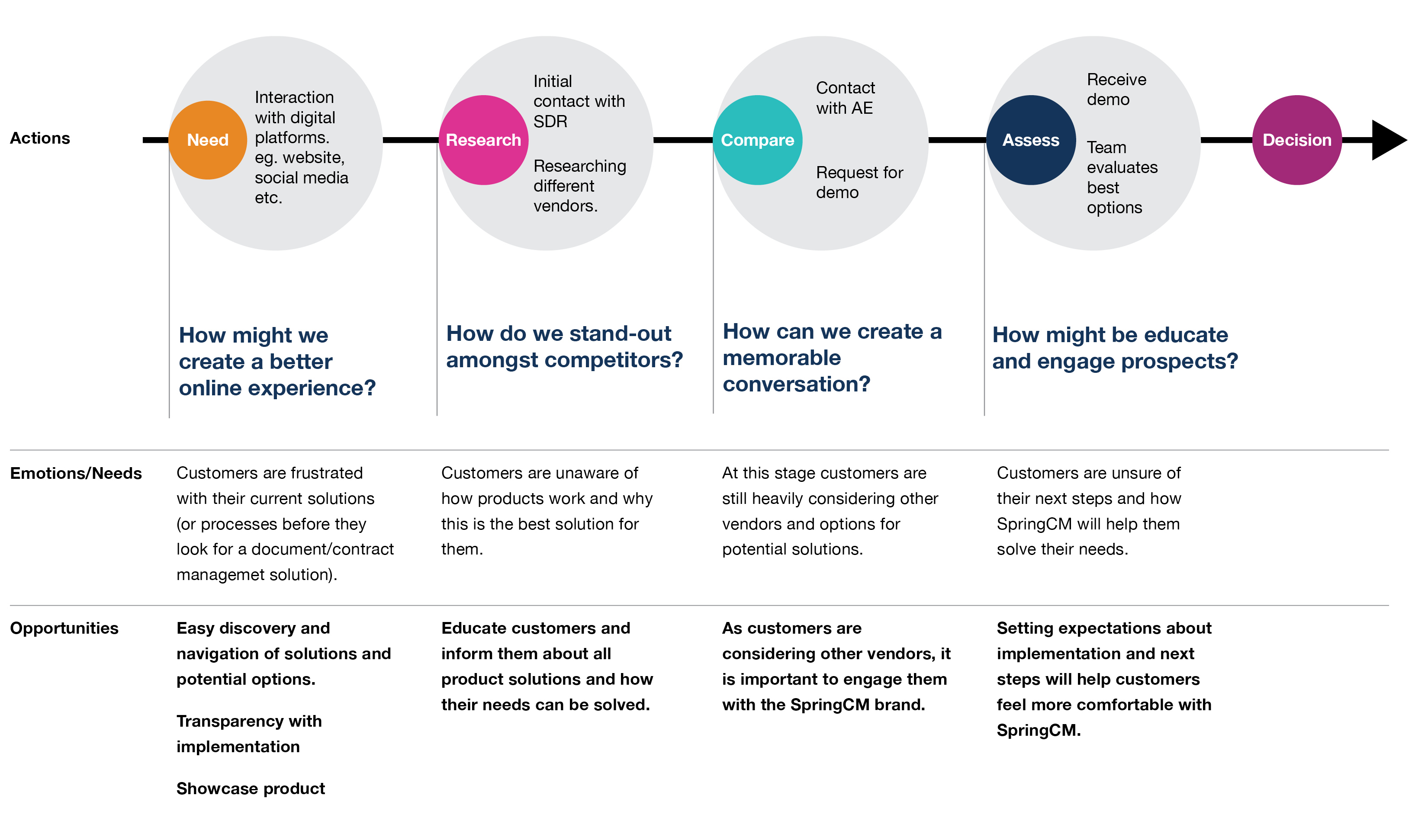
Key Insights
- The initial contact with SpringCM is “amazing!”
- Customers felt heard when talking about their needs.
- Customers were delighted about receiving demos that are tailored to their needs.
- Customers waited for up to 4 weeks to receive a demo.
- There is a lot of back and forth between customer and POC when gathering requirements.
- Implementation is difficult.
THE CUSTOMER JOURNEY
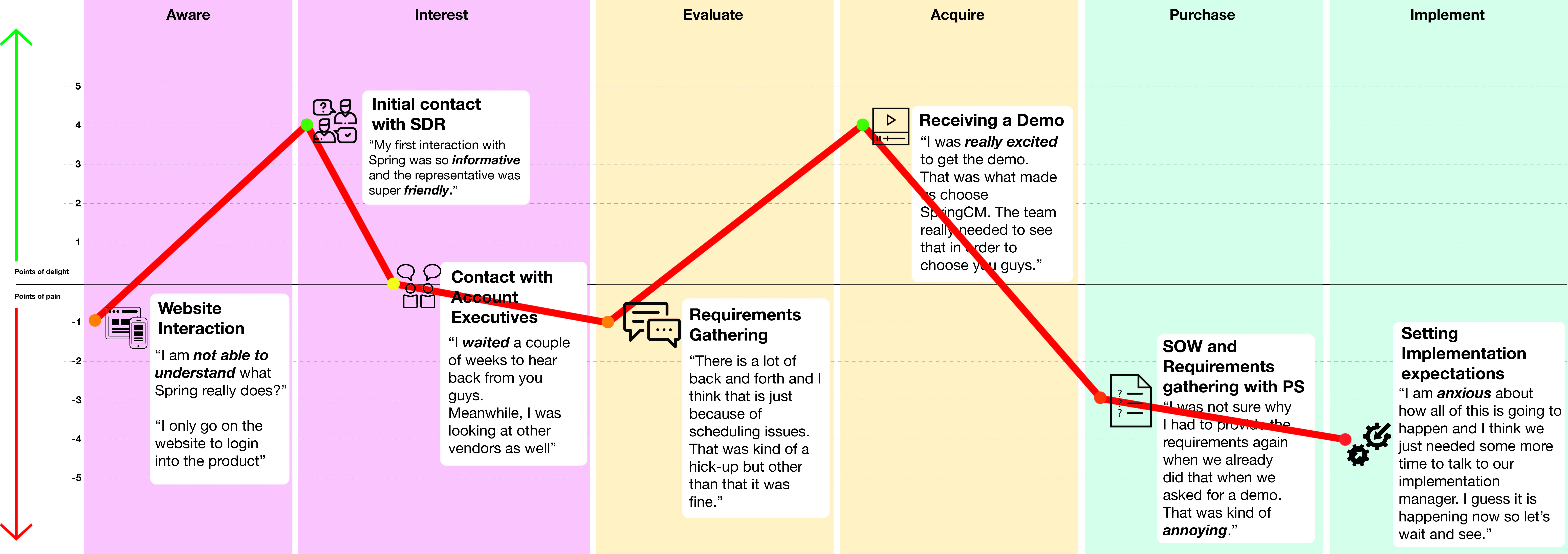
THE "AHA!" MOMENT
The Trend Line: After conducting this research, I started exploring an overarching theme. I examined the internal journey (previously plotted) and the prospect journey. I noticed a very unique trend line and generated a hypothesis to help create design forward recommendations.
Elevating the internal process should project externally and improve the overall prospect & customer journey.
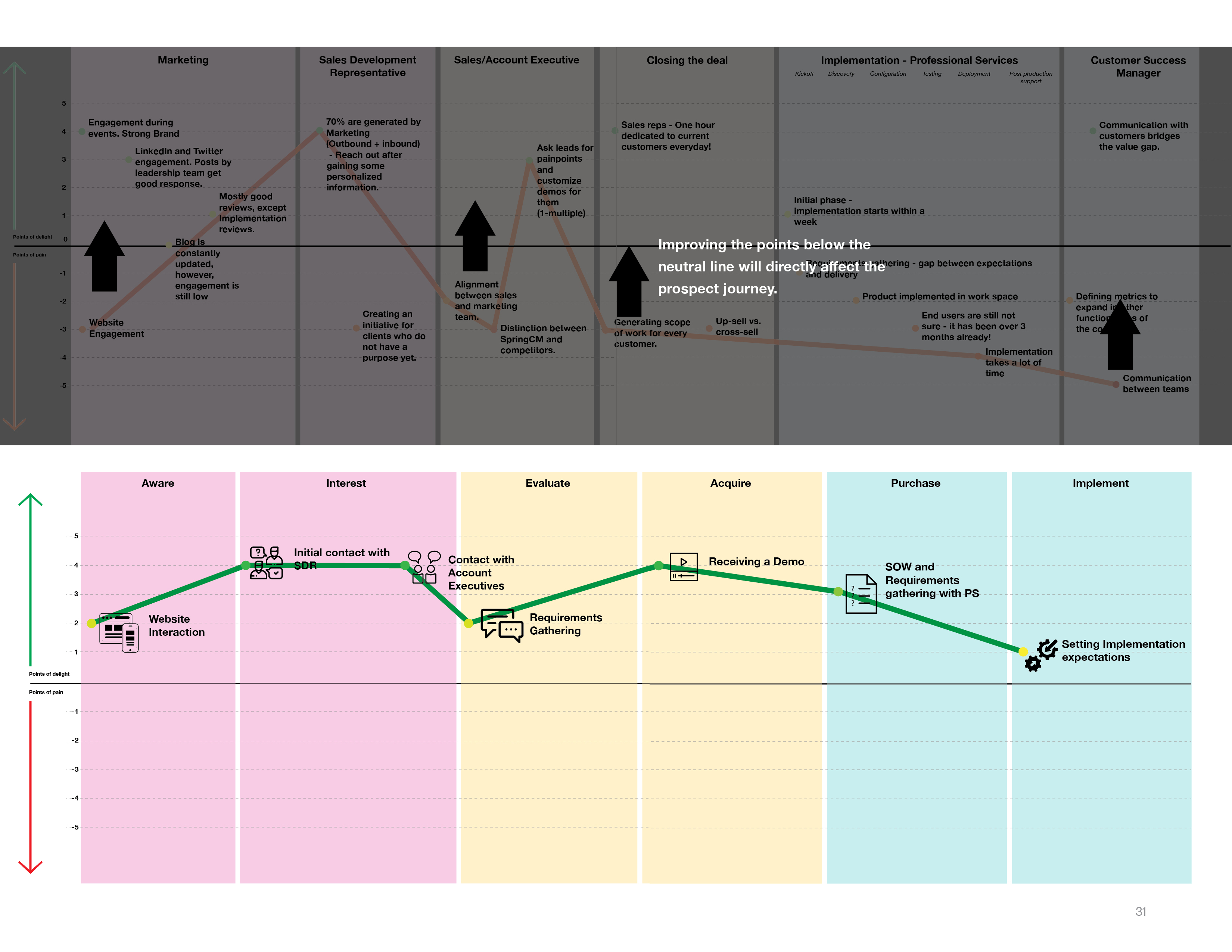
DESIGN RECOMMENDATIONS
Opportunities were identified after conducting and analyzing the research. The concepts are mainly centered around elevating the prospect experience as a whole and implementing small changes in the sales cycle. Some aspects that were kept into consideration were brand and product technicalities and complexities.
Brand: One of the main questions throughout the research process was “how does the brand show up in the different stages of the sales cycle? Keeping this key aspect in mind, the research was centered around brand identity and personality.
Product: Since, the product’s offerings are so complex, there were some aspects that were over-looked and classified as growing pains. For example, sometimes it can take weeks for customers to provide requirements and for SpringCM to completely comprehend these requirements. This delay could be because of scheduling purposes and really understanding the needs of the customers.
Representing the Implementation Process on the Website
The implementation cycle has a different timeline for customers; however the process and steps taken are similar for all customers. Showcasing this process on the website will not only be informative for the prospects; but also creates a sense of transparency and trust with the SpringCM brand.
RETROSPECTIVE
The project scope was to create a prospect journey map that gathers the emotions and experiences from when a person becomes aware of SpringCM to the point where they become a customer.
The biggest takeaways revolved around communication and improving the internal process.
Communication - During the research, I soon learned that there was a lack of communication between teams. Sharing and learning from individuals in each team would benefit with not only gaining more knowledge, but also having new aspects to offer to prospects and customers. This new knowledge could contribute to an initial conversation (SDR’s) and also keep customers engaged with the brand and company developments (CSM’s).
The internal process projects externally and affects the prospect/customer journey - The biggest learning through this entire process was discovering how the internal company process directly correlates with the external customer journey. The higlights and lowlights in the process are directly affecting the points of delight and points of pain on the prospect journey. Improving and alterning the business processes will improve the overall customer experience.

SpringCM, a DocuSign CompanyResearching the prospect customer journey

GlanceExploring quick reading strategies using screen readers

Cal's AngelsScaling the success of partnerships and events
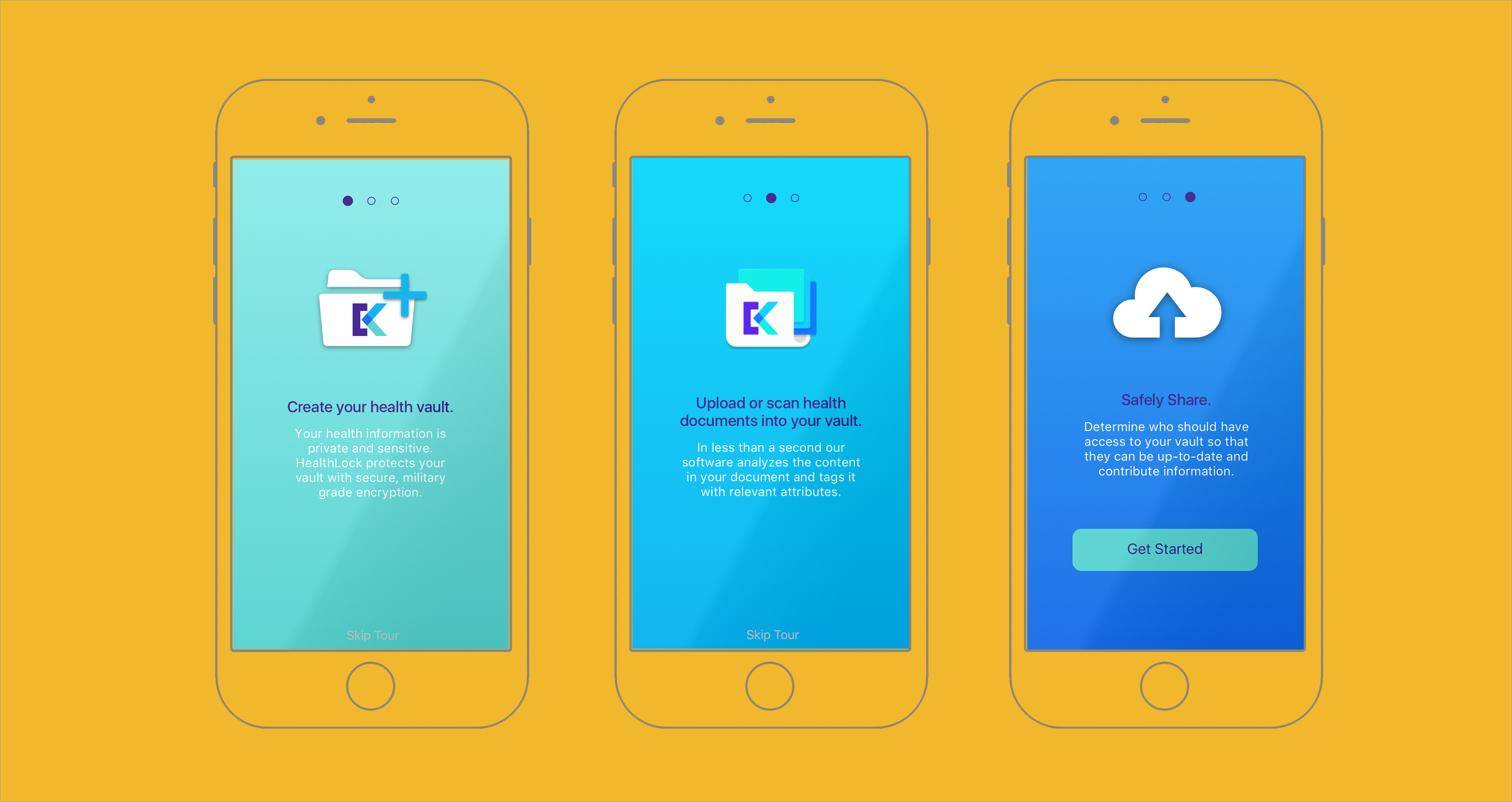
KeepSafeSecurely sharing private content

FlippieEmpowering students in rural India

BurbagA composting solution for community farms
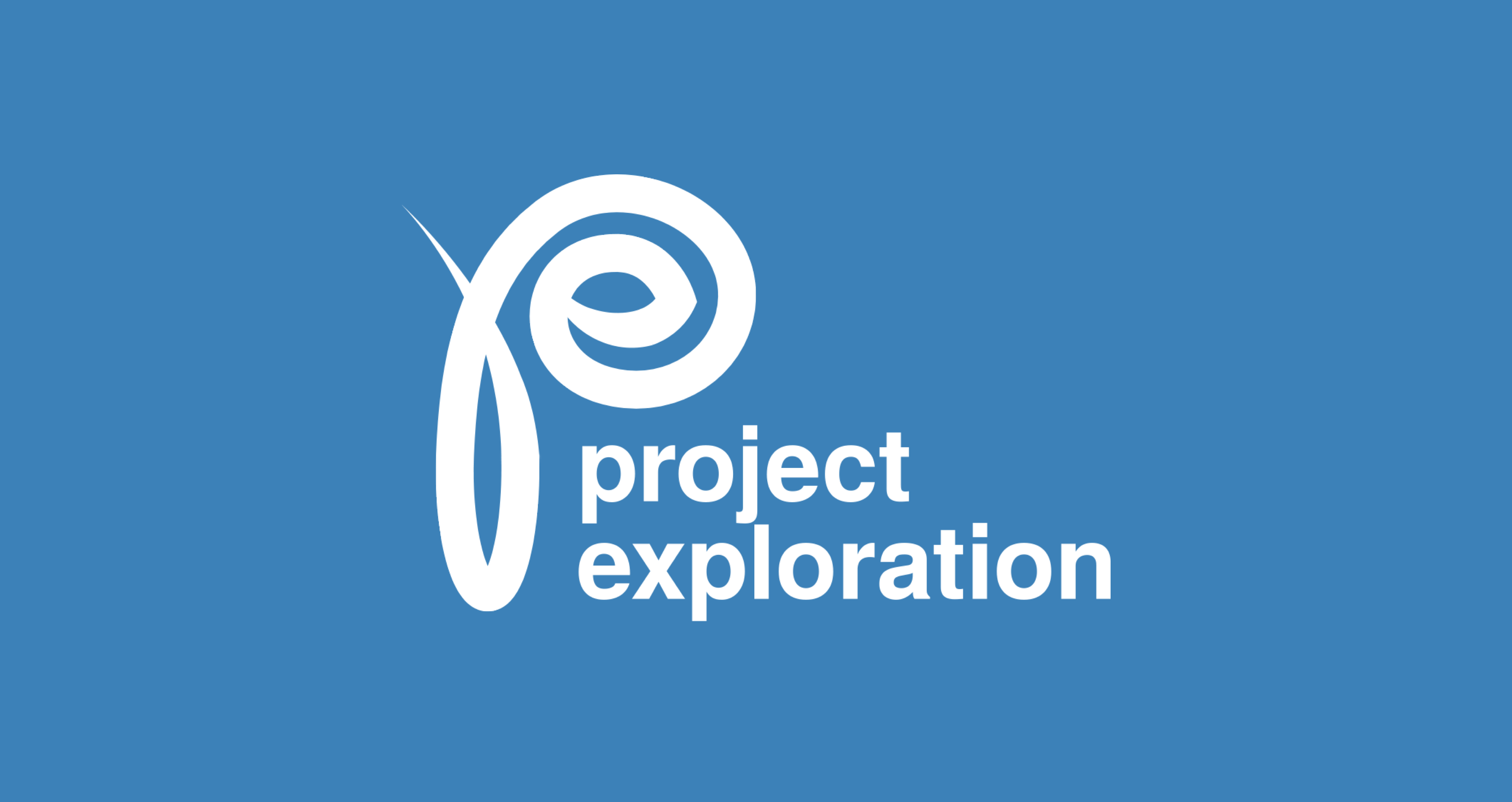
Project ExplorationIncreasing retention of key stakeholders

CareChainFacilitating mental health accountability

DonationsDiscovering charities for donations
